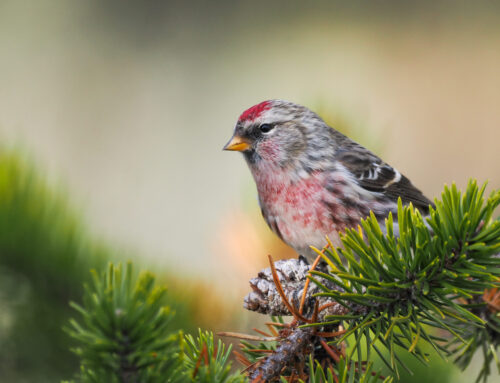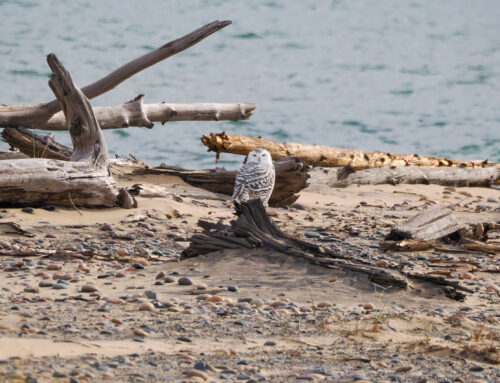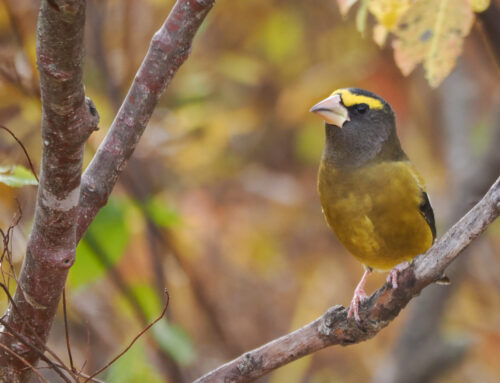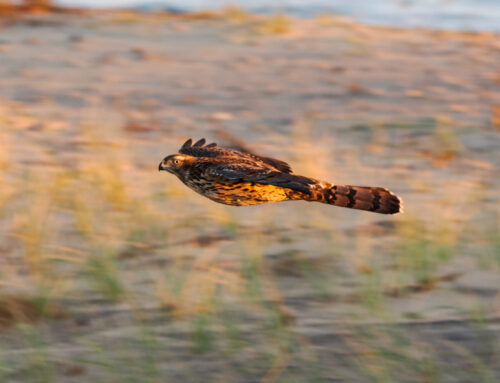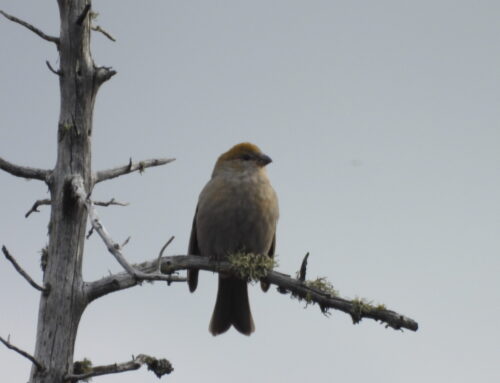Life has been moving slowly at Whitefish Point for the Piping Plovers, but that’s nothing to complain about. That was how I intended to start this update until Friday afternoon.
My days would start with observing lonely males like Of,YB:X,Y/O and Lover Boy foraging about, making scrapes, and calling for a mate.
In the afternoons, I would discover my pair, Vie and Little Bill Bob, down by the harbor. Bob would do his goose-stepping, sometimes copulating with Vie. He would then chase away the Semipalmated Plovers near them, valiantly protecting his territory and his mate. Since I would discover them later in the day, I was fearful that they spent their mornings scoping out other real estate prospects (I suspected in Vermilion Point Nature Reserve).
My first week was inundated with sightings of Killdeer on the shore. I was excited to finally see other species, like Black-bellied Plovers and Ruddy Turnstones.
And so I went on, patiently observing Vie and Bob and fawning over the new species I was seeing.
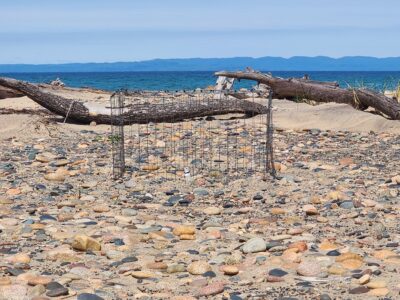
Little Bill Bob on nest in exclosure. Photo by Stephanie Owens
On Friday, May 24, my day started as usual. I found Vie down by the harbor in the morning this time, but Bob was nowhere to be found. I waited for about two hours, but he still didn’t turn up. I headed west towards the Shipwreck Museum, and just a little bit past the exclosed area I heard persistent peeping. I had finally come across Bob. I stepped away and watched as he hurriedly sat in divots within the sand. I became suspicious and combed the area through my spotting scope. As he hopped around from spot to spot, I eventually saw him sit on two eggs. I approached him trepidatiously, and as I did so, he moved back, performing a broken wing display, allowing me to confirm that he was, in fact, sitting on eggs.
I excitedly ran to my car, grabbing a mini exclosure and other tools. I constructed the exclosure and carefully carried it to the nest. Bob peeped nervously as I did so, but the disturbance was as quick as possible. Once the exclosure was up, I retreated and watched from a distance. Bob immediately entered and happily sat on his eggs.
Once the fourth egg has been laid, Vie will join Bob in the incubation. Until then, I will check the nest every day to keep track of the number of eggs laid.
New fencing will be posted, designating the nesting area and giving the pair the space they need. Whitefish Point visitors must remain outside the nesting area and keep dogs leashed while visiting.
I am very pleased to have our first nest of the season. Perhaps more females will join us here at the Point and establish more nests — at least, I’m manifesting so.
~ Stephanie Owens
2024 Piping Plover Monitor
Featured photo: Piping Plover known as Little Bill Bob. Photo by Stephanie Owens
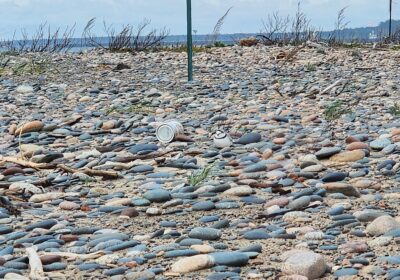
Piping Plover known as Lover Boy next to a can of garbanzo beans. Photo by Stephanie Owens
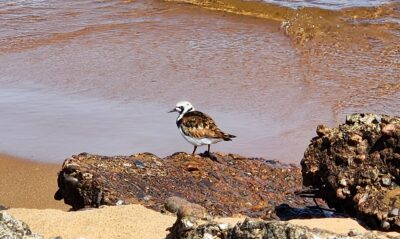
Ruddy Turnstone. Photo by Stephanie Owens
Piping Plover monitoring is a collaborative effort between Michigan Audubon and Seney National Wildlife Refuge (USFWS).
You can keep up with the 2025 Piping Plover action at WPBO by reading Stephanie’s blog posts and following WPBO’s social media (Facebook, Instagram, and X).
Stephanie Owens: 2025 Piping Plover Monitor
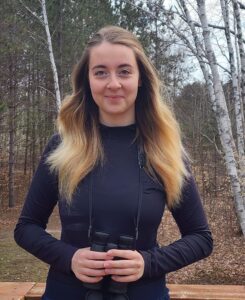 Having grown up in the Upper Peninsula of Michigan, an appreciation of the outdoors seemed inevitable for Stephanie. Walks in the woods with her father and high school science courses helped her identify this passion. In 2024, she earned a Bachelor of Science in Conservation Biology from Lake Superior State University, where she completed her senior thesis on the distribution of per- and polyfluoroalkyl substances in Eastern Upper Peninsula waterways. Now, with three seasons of PIPL monitoring under her belt, she looks forward to another summer with the U.P. plovers and returning to WPBO after a successful ’24 season. After the end of last season, Stephanie began her work at Eva Burrell Animal Shelter as a canine caretaker, fostering hope and love for all animals there.
Having grown up in the Upper Peninsula of Michigan, an appreciation of the outdoors seemed inevitable for Stephanie. Walks in the woods with her father and high school science courses helped her identify this passion. In 2024, she earned a Bachelor of Science in Conservation Biology from Lake Superior State University, where she completed her senior thesis on the distribution of per- and polyfluoroalkyl substances in Eastern Upper Peninsula waterways. Now, with three seasons of PIPL monitoring under her belt, she looks forward to another summer with the U.P. plovers and returning to WPBO after a successful ’24 season. After the end of last season, Stephanie began her work at Eva Burrell Animal Shelter as a canine caretaker, fostering hope and love for all animals there.


